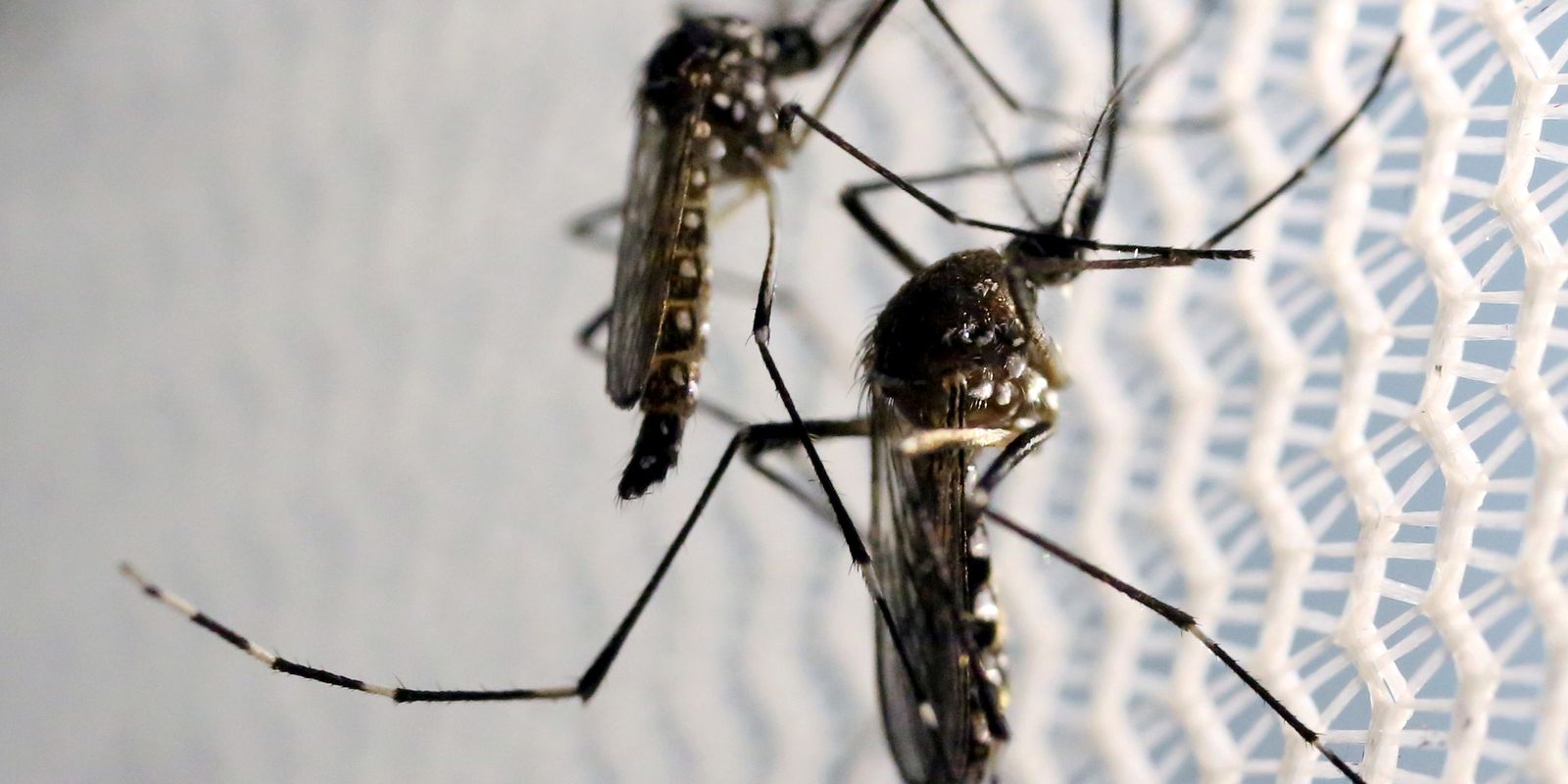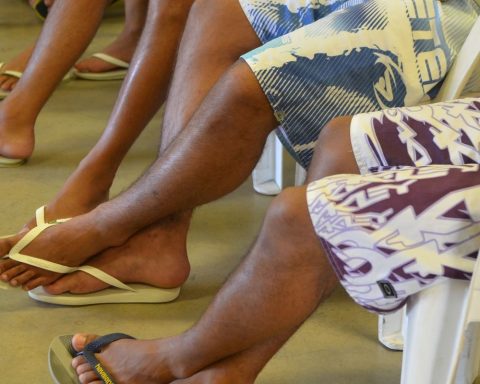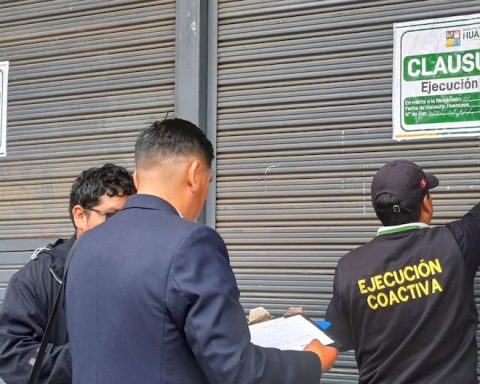In the midst of an outbreak of dengue, Brazil recorded an increase of 113.7% in probable cases of the disease until April this year, compared to the same period last year. According to a bulletin from the Ministry of Health, released this Monday (2), there were 542,038 probable cases between the first and sixteenth epidemiological week, between January 2 and April 23, 2022. This number is practically the same as even though it was recorded throughout 2021, when 544,000 probable cases of dengue were recorded. 
The disease, caused by a virus, is transmitted through the bite of a mosquito. Aedes aegypti. The main symptoms are high fever, skin rashes and muscle and joint pain. In the most severe forms, dengue can cause internal bleeding in organs and tissues, and lead to death.
The Midwest Region had the highest incidence rate of dengue, with 920.4 cases per 100,000 inhabitants, followed by the South (427.2 cases/100,000 inhabitants), Southeast (188.3 cases/100,000 inhabitants) regions. , North (154 cases/100 thousand inhabitants) and Northeast (105 cases/100 thousand inhabitants). The state of Goiás has been one of the most affected, leading the incidence of the disease in the country, with 1,366 cases per 100,000 inhabitants.
The municipalities that presented the highest records of probable cases of dengue until April 23, respective week were Goiânia/GO, with 31,189 cases (2,004.9 cases/100 thousand inhabitants), Brasília, with 29,928 cases (967.2/100 thousand inhabitants). ), Palmas, with 9,080 cases (2,897.7 cases/100,000 inhabitants), São José do Rio Preto (SP), with 7,466 cases (1,591.3 cases/100,000 inhabitants) and Votuporanga (SP), with 6,836 cases ( 7,113/100 thousand inhabitants).
Since the beginning of the year, 160 deaths from dengue have been confirmed in the country, 147 by laboratory criteria and another 13 by clinical analysis. The states with the highest number of deaths from the disease so far are: São Paulo (56), Goiás (19), Santa Catarina (19) and Bahia (16). Another 228 deaths are still under investigation.
Until April 23, 378 cases of severe dengue (DG) and 4,741 cases of dengue with warning signs (DSA) were reported. Another 368 cases of severe dengue and dengue with warning signs are still under investigation.
Chikungunya
Regarding chikungunya fever, the Ministry of Health reported that, as of April 23, 47,281 probable cases had been recorded, an incidence rate of 22.2 cases per 100,000 inhabitants in the country. These numbers correspond to a 40% increase in cases compared to the same period last year.
The Northeast region had the highest incidence, with 65.9 cases per 100,000 inhabitants, followed by the Central-West (15.6 cases/100,000 inhabitants) and North (8.4 cases/100,000 inhabitants) regions.
The municipalities that presented the highest records of probable cases of chikungunya until April were: Juazeiro do Norte (CE), with 3,539 cases (1,271.8 cases/100,000 inhabitants); Crato (CE), with 2,068 cases (1,544.3 cases/100 thousand inhabitants); Salgueiro (PE), with 1,883 cases (3,058.8 cases/100,000 inhabitants); Brumado (BA), with 1,744 cases (2,584.9 cases/100,000 inhabitants) and Fortaleza, with 1,563 cases (57.8 cases/100,000 inhabitants).
Since the beginning of the year, chikungunya has been the cause of death for eight people in the country, six of them in Ceará alone. Maranhão and Mato Grosso do Sul were the two other records. However, at least 12 deaths are still under investigation in the states of Ceará, Bahia, São Paulo, Paraíba, Pernambuco, Minas Gerais, Mato Grosso do Sul, Mato Grosso and Goiás.
Chikungunya is also a viral infection, like dengue, that can be transmitted by mosquitoes. Aedes aegypti and Aedes albopictus, the same insects that transmit dengue and yellow fever, respectively. Symptoms can include fever, joint pain, muscle pain, headache, eye pain, sore throat and fatigue. In more than 50% of cases, joint pain (arthralgia) becomes chronic and may persist for years.
Zika
The Ministry of Health also updated the balance of Zika cases in the country, with 2,118 probable cases as of April 14. The incidence rate was 0.99 case per 100,000 inhabitants in the country. In relation to 2021, the data represent a 53.9% increase in the number of cases. Until the week analyzed, no deaths caused by Zika were reported in Brazil.
Also transmitted by mosquito bite Aedes aegypti, the Zika virus was first identified in Brazil in 2015 and has this name because it was discovered in the Zika forest in Uganda, Africa. According to the Ministry of Health, about 80% of people infected with the Zika virus do not develop clinical manifestations. The main symptoms are headache, low fever, mild joint pain, red spots on the skin, itching and redness in the eyes. Other less frequent symptoms are swelling in the body, sore throat, coughing and vomiting. In general, the course of the disease is benign and the symptoms resolve spontaneously after 3 to 7 days.
Yellow fever
Between July 2021 and mid-April 2022, the Ministry of Health recorded 1,093 suspected epizootics of yellow fever, of which 25 (2.3%) were confirmed by laboratory criteria. Epizootics are the deaths of non-human animals as a result of the disease and can indicate the presence of the virus in a certain region and, with that, the risk of contamination of humans. Monkeys, of different species, are the main hosts of the yellow fever virus. In the same period, 485 suspected human cases of yellow fever were reported, of which 4 (0.8%) were confirmed.
Transmission of the virus among non-human primates (NHP) was recorded in Pará, Minas Gerais, Santa Catarina and Rio Grande do Sul, indicating the active circulation of the virus in these states and the increased risk of transmission to human populations during the seasonal period, which runs from December to May. The confirmed human cases had a probable site of infection in Pará (municipalities of Afuá and Oeiras do Pará) and in Tocantins (municipality of São Salvador do Tocantins).
Yellow fever is a viral disease transmitted by different species of infected mosquitoes. The most common symptoms are fever, muscle aches with prominent lower back pain, headache, loss of appetite, nausea or vomiting. In most cases, symptoms disappear after 3 or 4 days. According to the Pan American Health Organization (PAHO), 15% to 25% of patients enter a more serious second phase, in which the risk of death is greater and people can have yellow skin and eyes, bleeding , dark urine (kidney problems), plus abdominal pain with vomiting.
















